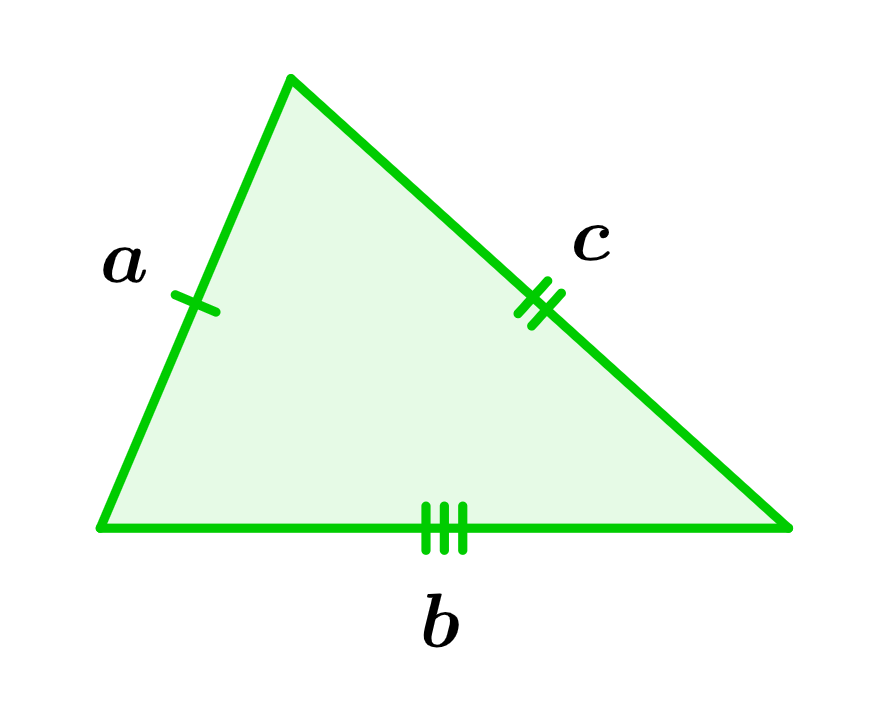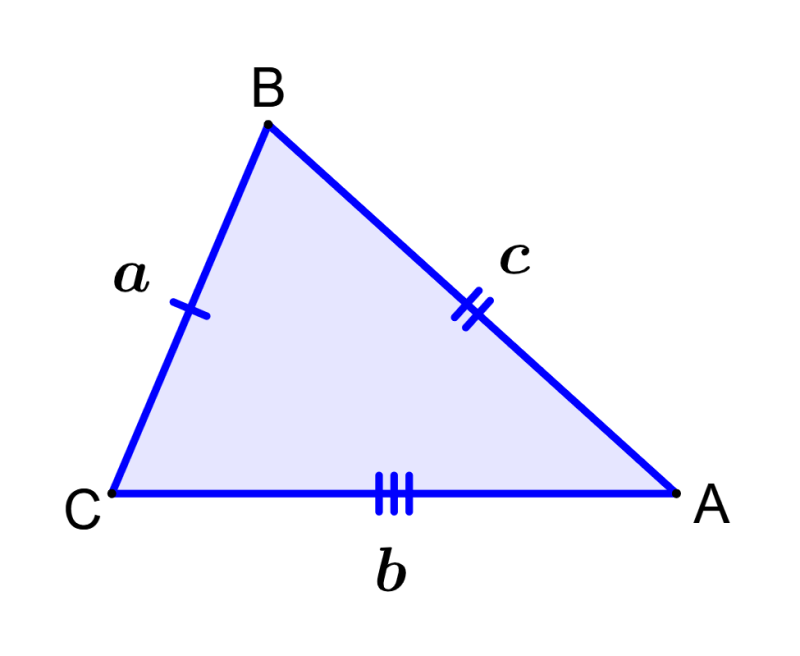The scalene triangle is a triangle that has all its sides of different lengths. This means that all the sides of the triangle are unequal and the three interior angles are also unequal. This is one of the three types of triangles that are based on the lengths of their sides.
Here, we will look at the definition of scalene triangles. Then, we will learn their most important formulas. Moreover, we will learn about their fundamental properties and characteristics. In addition, we will also look at some examples in which we will apply the scalene triangle formulas.
Definition of a scalene triangle
A scalene triangle is a triangle in which the three sides have different lengths and the three angles have different measures. However, the sum of the interior angles is always equal to 180 degrees, so it does comply with the property of the sum of the interior angles of triangles.

Important characteristics of scalene triangles
Some of the important characteristics of scalene triangles are as follows:
- The scalene triangle does not have equal sides, all of its sides are different from each other.
- The scalene triangle does not have equal angles, all of its angles are different from each other.
- These triangles do not have lines of symmetry.
- They do not have symmetry with respect to any point.
- Interior angles can be acute, obtuse, or right.
- If the angles of the triangle are less than 90 degrees, the center of the circumscribed circle will be located inside the triangle.
- A scalene triangle can be a right, obtuse, or acute triangle.
Important scalene triangle formulas
The following are the area and perimeter formulas that can be helpful in solving problems involving scalene triangles.
Area of a scalene triangle
If we know the length of the base and the length of the height of the triangle, we can use the following formula:
| $latex A=\frac{1}{2}\times b \times h$ |
where b represents the length of the base and h represents the length of the height.
If we know the lengths of the three sides of the triangle, we can use Heron’s formula:
| $latex A=\sqrt{S(S-a)(S-b)(S-c)}$ |
where, $latex a, ~ b, ~ c$ are the side lengths and S is the semi perimeter, which can be found using the following formula:
$latex S=\frac{a+b+c}{2}$
Perimeter of the scalene triangle
The perimeter of a triangle is equal to the sum of the lengths of all its sides. Therefore, we have the formula:
| $latex p=a+b+c$ |
where, $latex a, ~ b, ~ c$ represent the lengths of the sides of the triangle.
Examples of rhombus problems
EXAMPLE 1
- A triangle has a base of 14 m and a height of 10 m. What is its area?
Solution: We use the area formula to solve this:
$latex A=\frac{1}{2}\times b\times h$
$latex A=\frac{1}{2}\times 14\times 10$
$latex A=70$
The area is 70 m².
EXAMPLE 2
- A triangle has sides of lengths 8 m, 10 m, and 12 m. What is its area?
Solution: We use Heron’s formula to solve this:
$latex A=\sqrt{S(S-a)(S-b)(S-c)}$
First, we have to find the semi perimeter. Therefore, we use the following formula
$latex S=\frac{a+b+c}{2}$
$latex S=\frac{8+10+12}{2}$
$latex S=15$
Now, we solve for the area with the values we have:
$latex A=\sqrt{S(S-a)(S-b)(S-c)}$
$$A=\sqrt{15(15-8)(15-10)(15-12)}$$
$latex A=\sqrt{15(7)(5)(3)}$
$latex A=\sqrt{1575}$
$latex A=39.7$
The area is 39.7 m².
EXAMPLE 3
- We have a triangle with sides of lengths 11 m, 15 m, and 16 m. What is its perimeter?
Solution: We use the perimeter formula with these lengths:
$latex p=a+b+c$
$latex p=11+15+16$
$latex p=42$
The perimeter is 42 m.
See also
Interested in learning more about scalene triangles? Take a look at these pages:




